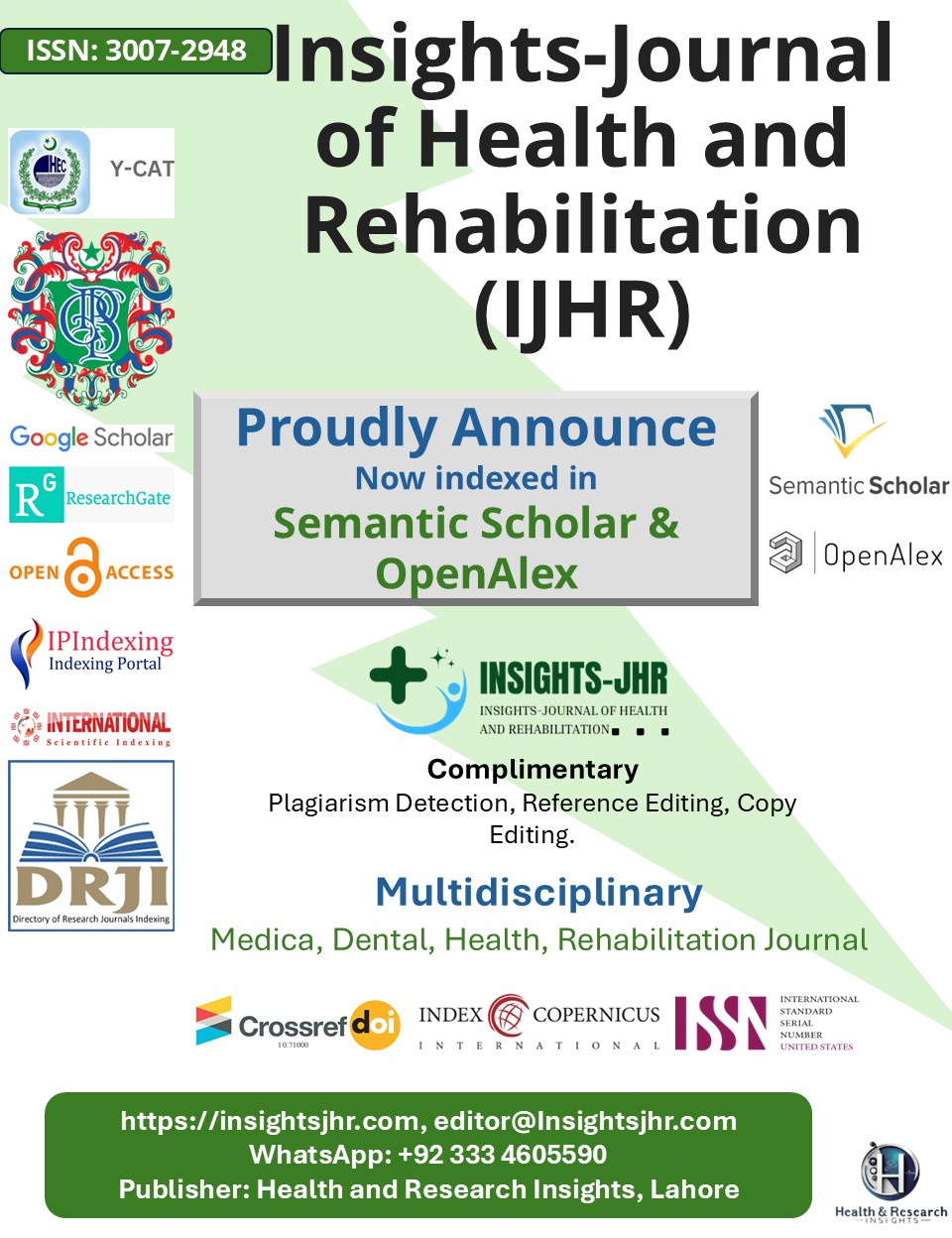COMPARATIVE EFFECT OF EYE PATCHING USING EYE PAD VERSUS POLARIZING FILM (DICHOPTIC METHOD) FOR AMBLYOPIA TREATMENT
DOI:
https://doi.org/10.71000/jjr6ss59Keywords:
Amblyopia, anisometropia, binocular therapy, dichoptic treatment, occlusion therapy, polarizing film, visual acuityAbstract
Background: Amblyopia is a common visual disorder in children, resulting from abnormal cortical development and characterized by reduced best-corrected visual acuity without an identifiable pathological cause. It is often unilateral and remains a leading cause of monocular vision impairment. Traditional treatment involves occlusion therapy, but recent advancements have introduced binocular approaches, such as dichoptic training, which promote balanced visual input and may enhance treatment compliance and efficacy. This study aims to compare the effectiveness of dichoptic therapy using polarizing films with conventional occlusion therapy in amblyopia treatment.
Objective: To evaluate and compare the efficacy of the dichoptic method using polarizing films and occlusion therapy with an eye patch in improving visual acuity and stereopsis in amblyopic patients.
Methods: This randomized controlled trial was conducted at the Ophthalmology Department of Jinnah Hospital, Lahore. A total of 34 amblyopic patients (16 males, 18 females), aged 3 to 19 years, were enrolled based on inclusion and exclusion criteria. Participants were randomly assigned to either the occlusion therapy group (n=17) or the dichoptic therapy group (n=17). Treatment was administered for two hours daily over six weeks. Baseline and post-treatment assessments included uncorrected visual acuity (UVA), best-corrected visual acuity (BCVA), and stereopsis. Paired t-tests were used for within-group analysis, and statistical significance was set at p < 0.05. Data analysis was performed using SPSS Version 27, adhering to the Declaration of Helsinki guidelines.
Results: The mean age was 8.65 ± 4.27 years in the patching group and 10.18 ± 4.36 years in the dichoptic group. Paired t-tests revealed that both treatment methods significantly improved visual acuity, but the dichoptic method demonstrated superior efficacy. In the dichoptic group, UVA improved from 0.04 ± 0.06 to 0.03 ± 0.06 in the right eye and from 0.03 ± 0.06 to 0.05 ± 0.09 in the left eye (p < 0.05). The BCVA in the right eye improved from 0.08 ± 0.07 to 0.05 ± 0.09, while the left eye improved from 0.05 ± 0.09 to 0.03 ± 0.06 (p < 0.05). In the patching group, improvements in BCVA of the left eye were significant (p = 0.034), but other visual parameters did not reach statistical significance (p > 0.05).
Conclusion: Dichoptic therapy using polarizing films significantly improved visual acuity and stereopsis compared to conventional occlusion therapy, demonstrating greater effectiveness in amblyopia management. Given its superior outcomes and potential for better compliance, dichoptic therapy represents a promising alternative to traditional patching methods. Further studies with larger sample sizes and extended follow-up periods are needed to validate these findings.
Downloads
Published
Issue
Section
License
Copyright (c) 2025 Muhammad Ali , Saleh Shah, Muhammad Anwar Awan , Ali Mohsin , Ayesha Javed , Tahira Jabeen, Samina Zahoor (Author)

This work is licensed under a Creative Commons Attribution-NonCommercial-NoDerivatives 4.0 International License.







